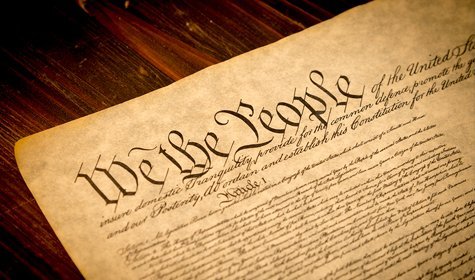Article I, Section 8, Clause 1 of the Constitution reads as follows:
The Congress shall have Power [1] To lay and collect Taxes, Duties, Imposts and Excises, to pay the Debts and provide for the Common Defence and general Welfare of the United States; but all Duties, Imposts and Excises shall be uniform throughout the United States.
The Constitution also requires that “direct taxes” be apportioned among states by population. The implication is that excises are not among those levies deemed “direct taxes”—so that excises must be uniform, but need not be apportioned.
- Thomas Sheridan’s 1789 English dictionary defined “excise” as “A tax levied upon commodities.”
- A 1786 Massachusetts tax statute specified that an excise was an indirect tax imposed “on such arts for luxury . . . and on such domestic articles, as are not the necessaries of life.”
- George Nicholas at the Virginia ratifying convention described excises as “a kind of tax on manufactures.”
- In Federalist No. 33, Alexander Hamilton wrote of “recourse . . . to excises, the proper objects of which are particular kinds of manufactures.”
Typical subjects of excise taxes were alcoholic beverages, carriages, silks, and certain other items then considered luxuries, such as coffee, chocolate, and tea.
As an indirect tax, an excise was one kind of levy known generically as a “duty.”
By contrast, taxes on individuals (“capitations”), property, businesses, income, and the ordinary business of life were considered “direct.” The Constitution required them to be apportioned among the states.
In 1937, the Supreme Court decided Charles C. Steward Machine Co. v. Davis, in which the Court ruled that the Social Security tax on employers was an “excise,” and therefore did not have to be apportioned among the states. The Court cited three pre-constitutional tax statutes that were not imposed on commodities but, it said, were excises. All of the Court’s citations were bogus: None of the statutes were excises. Two were head taxes. The other was a non-excise duty.
The Steward Machine case illustrates the incompetent, and sometimes mendacious, methods the Supreme Court employed during the 1930s and 1940s—the very nadir of its history.*
In fact, the tax on employers was a classic direct tax and should have been apportioned among the states as Congress previously had apportioned other direct taxes.
* * * *
(* Some would argue that the Dred Scott case of 1857, a similarly mendacious decision, represented the Court’s nadir. But that was a single horrid case issued by an otherwise competent bench. At least on constitutional subjects, the Court during the 1930’s and 1940’s issued one poorly-crafted decision after another.)
Note: This column is based on research for Rob Natelson’s forthcoming article, tentatively entitled, What the Constitution Means by “Duties, Imposts, and Excises”—and Taxes (Direct or Otherwise)
Rob Natelson is a long-time conservative/free market activist, but professionally he is a constitutional scholar whose meticulous studies of the Constitution’s original meaning have been repeatedly cited in U.S. Supreme Court opinions and published or cited by many top law journals (See: www.constitution.i2i.org/about/) He co-authored The Origins of the Necessary and Proper Clause (Cambridge University Press) and The Original Constitution (Tenth Amendment Center). He was a law professor for 25 years and taught constitutional law and related courses. He is the Senior Fellow in Constitutional Jurisprudence at Colorado’s Independence Institute.

